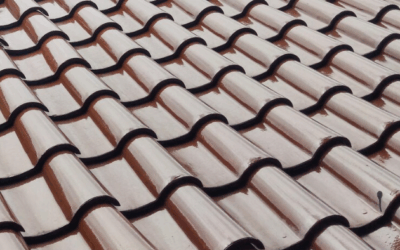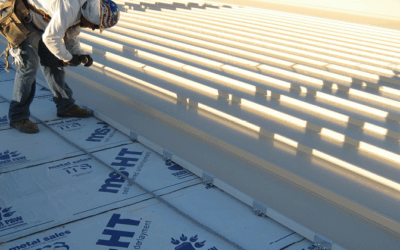Disadvantages of Standing Seam Metal Roof: What Homeowners Should Know
When considering roofing options, standing seam metal roofs have grown in popularity due to their modern aesthetic, durability, and long lifespan. However, before committing to this type of roofing, it’s important to understand the disadvantages of standing seam metal roof. While metal roofs offer numerous benefits, they also come with drawbacks that homeowners should weigh carefully, including cost, installation challenges, noise, and maintenance considerations. Understanding these disadvantages will help you make an informed decision about whether a standing seam metal roof is the right choice for your home.
This guide provides a detailed look at potential downsides, cost implications, design considerations, and practical insights for homeowners thinking about a standing seam metal roof.
What Is a Standing Seam Metal Roof?
A standing seam metal roof consists of long metal panels that run from the roof ridge to the eaves. These panels are connected by raised seams, or vertical legs, that interlock to provide a tight seal. Typically made from steel, aluminum, copper, or zinc, standing seam roofs are designed to be durable, weather-resistant, and aesthetically appealing.
Unlike traditional asphalt shingles, these roofs are smooth, modern, and often feature concealed fasteners, which reduce the likelihood of leaks. The popularity of standing seam metal roofs has grown, especially for homeowners seeking longevity and minimal maintenance, but it’s important to examine the potential disadvantages before installation.
1. Higher Upfront Costs
One of the most significant disadvantages of standing seam metal roof is the high upfront cost compared to traditional roofing materials like asphalt shingles.
- Material Costs: Standing seam panels are more expensive than asphalt shingles, often costing $7–$14 per square foot for materials alone, depending on the metal type and finish.
- Installation Costs: Specialized labor is required for proper installation, adding $5–$10 per square foot in labor costs.
- Total Cost: Homeowners may face total costs ranging from $15,000 to $40,000 for an average-sized home.
While these roofs often pay off over time through longevity and reduced maintenance, the initial investment can be prohibitive for many homeowners.
2. Complex Installation
Standing seam metal roofs require specialized installation skills. Improper installation can lead to serious problems such as leaks or panel warping.
- Professional Expertise Required: Unlike asphalt shingles, standing seam panels must be carefully aligned, and seams must be properly fastened.
- Longer Installation Time: Complex roofing layouts, multiple valleys, and penetrations increase installation time.
- Limited DIY Options: Due to safety concerns and technical requirements, DIY installation is rarely feasible.
This complexity can make finding qualified contractors challenging, and errors during installation may void warranties or lead to costly repairs.
3. Noise Concerns
Another notable disadvantage of standing seam metal roof is noise. Metal roofs can amplify sounds from rain, hail, or wind.
- Rain and Hail: Heavy rain or hailstorms hitting the metal panels can create a loud, echoing sound throughout the home.
- Wind Noise: Strong winds may cause vibrations or rattling if panels are not securely fastened.
- Mitigation Measures: Proper underlayment, insulation, and soundproofing can reduce noise, but these add additional costs.
For homeowners sensitive to sound, this may be a significant consideration when evaluating roofing options.
4. Expansion and Contraction
Metal expands and contracts with temperature changes. This is a unique characteristic of standing seam metal roofs that can create issues over time if not properly addressed.
- Thermal Movement: Panels can move several inches during seasonal temperature changes, causing stress on fasteners and seams.
- Potential Leaks: Improperly installed panels may separate, leading to water infiltration.
- Maintenance Needs: Regular inspections are required to ensure seams and fasteners remain secure.
While modern designs include clip systems that accommodate expansion, homeowners should be aware that this is an ongoing consideration.
5. Limited Color and Style Options
Although standing seam metal roofs offer a sleek and modern aesthetic, they have fewer design options compared to shingles or tiles.
- Fewer Colors: While standard colors are available, homeowners seeking unique or highly customized colors may face limitations.
- Panel Appearance: Standing seam panels have a uniform, linear look that may not suit all architectural styles.
- Texture Limitations: Unlike asphalt shingles or slate, metal panels lack texture variety, which can impact the overall visual appeal.
This means that while standing seam roofs are elegant and modern, they may not complement all home designs.
6. Risk of Denting and Damage
Though durable, standing seam metal roofs are susceptible to dents from hail, falling branches, or heavy debris.
- Hail Damage: Larger hailstones can leave noticeable dents.
- Falling Branches: Overhanging trees may scratch or dent the panels.
- Cosmetic Impact: While dents rarely compromise function, they can affect curb appeal and resale value.
Choosing thicker metal panels and performing regular tree maintenance can reduce this risk, but it remains a potential disadvantage.
7. Slippery Surface
Metal roofs are naturally smooth and can become extremely slippery when wet or icy.
- Safety Concerns: Walking on a metal roof is dangerous, making DIY inspections or repairs risky.
- Professional Access Needed: Routine maintenance may require professional services, adding to long-term costs.
- Ice and Snow: Snow removal can be difficult and requires special tools or contractors, especially in colder climates.
This slippery surface factor is particularly important for homeowners in snowy regions or those considering rooftop access.
8. Expansion of Repair Costs
Repairs for standing seam metal roofs can be more expensive than for asphalt or composite roofs.
- Specialized Labor: Few contractors have the expertise to repair standing seam panels properly.
- Material Matching: Matching existing panels in color and style may be difficult, especially for older roofs.
- Hidden Damage: Water infiltration between seams can affect underlayment or decking, increasing repair costs.
These factors mean that while repairs are less frequent than for shingles, they can be costly when needed.
9. Potential for Rust and Corrosion
Although most standing seam metal roofs are coated or treated to resist rust, improper installation or damage can lead to corrosion over time.
- Scratched Panels: Installation damage or falling debris can expose the metal to moisture, leading to rust.
- Coating Degradation: Paint or protective coatings may wear over decades, requiring touch-ups or re-coating.
- Saltwater Exposure: Homes in coastal areas are more susceptible to corrosion from salty air.
Homeowners in these environments may need to invest in additional maintenance or choose more resistant metals such as aluminum or stainless steel.
10. Limited Contractors and Warranty Challenges
Because standing seam metal roofs are specialized, homeowners may face limited contractor availability.
- Fewer Qualified Installers: Not every roofing company can install standing seam panels correctly.
- Warranty Concerns: Incorrect installation can void manufacturer warranties, leaving homeowners responsible for repairs.
- Higher Costs: Scarcity of qualified contractors may increase labor costs, especially in rural areas.
Selecting a certified contractor is critical to avoid these potential disadvantages.
Mitigating the Disadvantages
While standing seam metal roofs have drawbacks, many can be mitigated through proper planning and professional installation:
- Budgeting for Upfront Costs: Consider financing options or allocating savings to cover the higher initial investment.
- Hiring Certified Contractors: Ensure proper installation to prevent leaks, thermal movement issues, and voided warranties.
- Noise Reduction Measures: Use soundproof underlayment and insulation to minimize rain and hail noise.
- Regular Inspections: Check for dents, corrosion, or loose seams to catch problems early.
- Tree Maintenance: Trim overhanging branches to reduce potential panel damage.
- Color and Panel Selection: Choose finishes that match your home’s architecture and resist fading or rust.
Proper preparation can reduce many of the risks associated with standing seam metal roofs while preserving their long-term benefits.
Cost Implications of Disadvantages
Homeowners should understand that the disadvantages often translate into costs:
- Installation Costs: $5–$10 per square foot in labor due to complexity.
- Repair Costs: $200–$1,500+ depending on panel damage or seam issues.
- Maintenance Costs: Occasional inspections, cleaning, and repainting or touch-ups may be needed.
- Noise Mitigation: Adding insulation or underlayment may cost an extra $1–$3 per square foot.
Awareness of these factors allows homeowners to plan for the total cost of ownership, not just the upfront investment.
Comparing Disadvantages to Other Roof Types
Understanding disadvantages in context helps with decision-making:
- Standing Seam vs Asphalt Shingles: Higher cost, more noise, and complex installation, but longer lifespan and durability.
- Standing Seam vs Wood Shake: Less prone to rot and fire but can dent and is more expensive.
- Standing Seam vs Tile: Easier to install and lighter, but fewer color and texture options.
Ultimately, the trade-offs depend on priorities: aesthetics, lifespan, durability, and maintenance.
Real-World Considerations
Homeowners often report:
- Peace of mind with durability and longevity.
- Satisfaction with modern aesthetics despite initial costs.
- Occasional concerns with noise, especially in heavy rain areas.
- Higher repair costs for hail or impact damage compared to shingles.
Evaluating personal preferences, climate, and budget is essential before choosing a standing seam metal roof.
FAQs About Disadvantages of Standing Seam Metal Roof
1. Are standing seam metal roofs noisy?
Yes, but proper underlayment and insulation can significantly reduce noise.
2. How long do these roofs last?
Typically 40–70 years with proper maintenance.
3. Can I walk on a metal roof?
It’s slippery and risky; professional access is recommended.
4. Do they require maintenance?
Yes, inspections for dents, corrosion, or loose seams are recommended.
5. Are repairs expensive?
Repairs are less frequent than shingles but can be costly when needed due to specialized labor and materials.
Conclusion
While standing seam metal roofs offer unmatched durability, aesthetic appeal, and long-term value, homeowners should carefully consider the disadvantages of standing seam metal roof before making a decision. High upfront costs, complex installation, noise, thermal expansion, limited style options, and potential repair challenges are all factors that require thoughtful evaluation.
By understanding these drawbacks and planning accordingly with certified contractors, proper insulation, and regular maintenance, homeowners can enjoy the benefits of a standing seam metal roof while mitigating its disadvantages. Making an informed choice ensures that your roof provides both beauty and protection for decades to come.440-235-3124
 (440) 307-2060
(440) 307-2060



